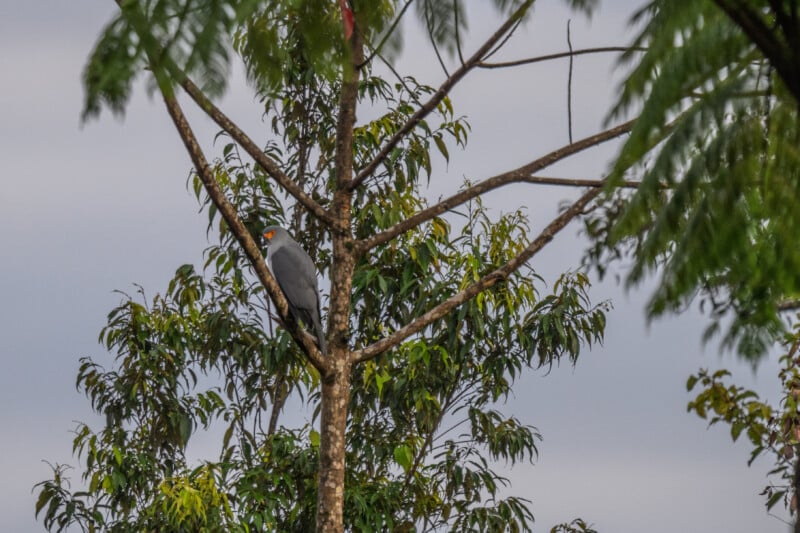Photographer Captures First-Ever Image of Bird of Prey ‘Lost’ for 55 Years

A wildlife photographer captured the first-ever image of an elusive bird of prey long thought to be lost.
For 55 years, the New Britain Goshawk, or Accipiter princeps, had not been seen which left many ornithologists to presume the rare bird of prey was lost. As a result, the elusive bird — which had never been photographed before and was only known to science from four specimens — was categorized as “vulnerable” on the IUCN Red List of Threatened Species.
![]()
However, in March, Fiji-based wildlife photographer Tom Vierus was taking pictures of birds on the island of New Britain in Papua New Guinea on an expedition with The World Wide Fund for Nature (WWF). Unbeknownst to the photographer at the time, as he was shooting pictures, he managed to capture the first-ever image of the New Britain Goshawk.
“I was on a scoping trip with WWF in Pomio [eastern New Britain], with three members of the local community guiding us through the forest, so we could better understand the presence of species,” Vierus says in a press release.
“I photographed several bird species, including the New Britain Goshawk, but wasn’t aware of the significance at the time.”
‘A Great Surprise’
Internationally-renowned ornithologists later confirmed that Vierus had got the first-known photograph of the bird species which had not been seen in over half a century.
“It was such a great surprise to hear that this photo seems to be the first-ever of this ‘lost species’!” Vierus says. “It is wonderful to see how conservation photography can help in safeguarding areas by documenting the existing biodiversity and also a good reminder of how important visual storytelling is.
“I truly hope this mostly pristine part of the world can remain as intact as possible with the help of the local communities, their already existing conservation initiatives and the support of WWF.”
Vierus photographed the bird in forests that are part of the Nakanai Ranges, a rugged and remarkably biodiverse expanse of green-dotted mountains that form a section of the Sublime Karsts of Papua New Guinea, a tentative UNESCO World Heritage site.
“The last documented scientific record of the [New Britain Goshawk] species appears to be a July 1969 specimen that is kept in the American Museum of Natural History in New York, USA,” John Mittermeier, Director of the Search for Lost Birds at American Bird Conservancy, says confirming the photographed bird as the New Britain Goshawk.
“While there have been multiple sight-only records in the intervening years, the New Britain Goshawk seems to have eluded photo, sound, and specimen documentation for 55 years.”
Image credits: All photos by WWF-Pacific/ Tom Vierus.